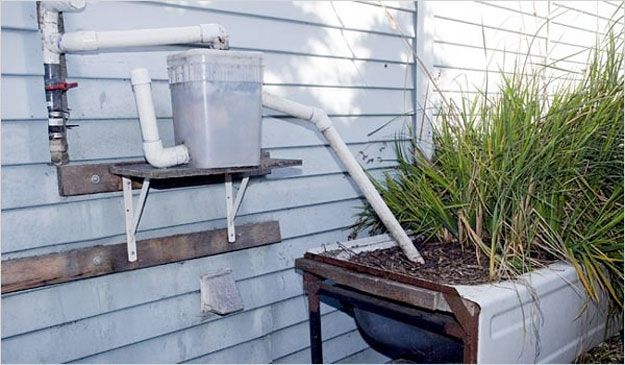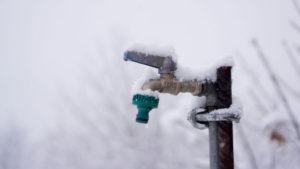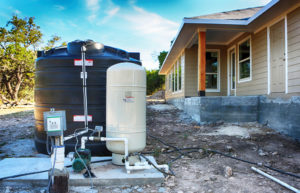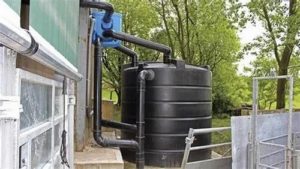Are you tired of wasting precious water resources on your garden and lawn?
Do you want to reduce your environmental footprint and save money on your water bill?
If so, then it’s time to consider installing a greywater system!
This innovative solution collects and reuses wastewater from sinks, showers, and washing machines, diverting it away from our sewage systems and back into the landscape.
With the right tools and knowledge, you can easily install a greywater system in your home or business, providing a sustainable and efficient way to irrigate your plants.
Our comprehensive guide will walk you through every step of the installation process, from designing your system to maintaining it over time.
Whether you’re a DIY enthusiast or looking for professional assistance, this guide has everything you need to get started on your greywater journey.
Dive into the world of greywater and start conserving water today!
Choose the right system
Greywater systems come in different configurations, so it’s important to choose the right one for your needs and budget. Consider factors such as the size of your property, your water usage patterns, and the amount of wastewater you need to treat.
Different systems are designed to treat different amounts of wastewater, and some may be more suitable for larger properties or households with higher water usage.
For example, a property with a small garden and low indoor water usage may only require a simple greywater irrigation system, while a larger property with multiple toilets and showers may need a more comprehensive treatment system.
The cost of the system should be taken into consideration, as some systems may be more expensive than others.
By carefully considering these factors, you can choose the right greywater system for your needs and budget, ensuring that you make the most of this water-saving technology.
Check local regulations
Before you begin installing your greywater system, check with your local government to see if there are any regulations or restrictions on greywater use. Some areas may have specific requirements or prohibitions, so it’s important to do your research and comply with local laws.
Installing a greywater system can be a valuable solution for households looking to reduce their water consumption and lower their utility bills.
However, before you begin installing your system, it is important to check with your local government to ensure that you are complying with any regulations or restrictions on greywater use.
Some areas may have specific requirements or prohibitions related to the use of greywater, so it is essential to do your research and understand any local laws or ordinances that may apply.
For example, some jurisdictions may require permits or special licenses to install and operate a greywater system, while others may have strict guidelines for the use of greywater in agriculture or irrigation.
By checking local regulations before installing your system, you can avoid any potential legal or financial repercussions and ensure that your system is installed and operated in a safe and legal manner.
Many local governments offer incentives or rebates for households that adopt water-saving technologies like greywater systems, so be sure to research any available programs in your area.
Assess your property
Consider the slope and drainage of your property, as well as the location of your water source (e.g., a nearby stream or a well). These factors will influence the design and installation of your greywater system.
Assessing your property is a important step in designing and installing a greywater system.
The slope and drainage of your property will influence the flow of greywater and the location of your water source, such as a nearby stream or a well, will determine the feasibility of using greywater for irrigation, toilet flushing, and other non-potable purposes.
For example, if your property has a significant slope, you may need to install a pump or gravity-fed system to distribute the greywater throughout your property.
Similarly, if your water source is a well, you’ll need to ensure that the greywater system does not compromise the water quality of your well.
By carefully assessing your property’s features and water source, you can create a customized greywater system that meets your specific needs and maximizes its potential benefits.
Plan the layout
Sketch out a rough design of your greywater system, including the placement of the treatment tank, distribution pipes, and irrigation lines. Consider factors such as ease of use, maintenance access, and aesthetics.
When planning the layout of your greywater system, it’s important to consider several factors to ensure a functional and user-friendly design.
Start by sketching out a rough design of your system, including the placement of the treatment tank, distribution pipes, and irrigation lines.
Consider the ease of use and maintenance access for your system.
For example, you may want to locate the treatment tank in a convenient location, such as near the garden or under a deck, to minimize the distance required to transport the treated greywater.
Consider the aesthetics of your system, as you may want to incorporate natural-looking materials or disguise the pipes and tanks to blend in with your yard’s landscape.
By carefully planning the layout of your greywater system, you can ensure a practical and visually appealing design that meets your needs for years to come.
Choose the right treatment technology
Greywater treatment technologies vary, and some may be more suitable for your specific needs. Research different options, such as filter systems, bioreactors, and disinfection systems, and choose the one that best fits your needs and budget.
When it comes to treating greywater, there are a variety of technologies available, each with its own strengths and weaknesses.
It’s important to research and compare different options, such as filter systems, bioreactors, and disinfection systems, to determine which one is the best fit for your specific needs and budget.
For example, filter systems are a simple and cost-effective solution for removing suspended solids and other contaminants from greywater, while bioreactors can be used to treat higher volumes of water and break down organic matter.
Disinfection systems, such as ultraviolet (UV) light or chlorine disinfection, can be used to kill bacteria and other microorganisms in the greywater.
By choosing the right treatment technology, you can ensure that your greywater is safe and clean for use in your home or business.
Some treatment technologies can also be used for other purposes such as irrigation, toilet flushing, and washing machine drains.
Install the treatment tank
Install the treatment tank according to the manufacturer’s instructions, making sure it is properly sized, vented, and equipped with the appropriate treatment technology.
To ensure effective and reliable wastewater treatment, it is essential to install the treatment tank according to the manufacturer’s instructions.
This involves selecting a tank that is properly sized for the expected flow rate and volume of wastewater, and that is equipped with the appropriate treatment technology.
For example, a septic tank may require anaerobic treatment, while a municipal wastewater treatment plant may use aerobic treatment.
Proper venting of the tank is also important to prevent the buildup of odors and gases, and to ensure that the treatment process is functioning effectively.
The treatment tank should be equipped with monitoring and control systems to ensure that the treatment process is functioning as intended, and to alert operators of any potential issues or problems.
Overall, proper installation and configuration of the treatment tank is a critical step in ensuring effective and reliable wastewater treatment.
Lay the distribution pipes
Install the distribution pipes that will carry the treated greywater to your irrigation lines, making sure to slope the pipes to ensure proper drainage. Use appropriate fittings and connectors to ensure a secure and watertight connection.
When laying the distribution pipes for your treated greywater irrigation system, it is essential to ensure proper slope and secure connections to guarantee effective and reliable performance.
To begin with, choose the appropriate piping material for your climate and soil conditions, taking into account factors such as durability, resistance to corrosion, and ease of installation.
Once you have selected your piping material, lay the pipes in a sloping configuration, gradually decreasing in elevation as the pipes extend towards the irrigation lines.
This slope will help to facilitate proper drainage and prevent the accumulation of water, which can lead to contamination and reduced system efficiency.
As you install the pipes, use high-quality fittings and connectors to ensure a secure and watertight connection.
This will help to prevent leaks and ensure the continuous flow of treated greywater to your irrigation lines.
Consider incorporating a backflow prevention device into your system to protect against the reverse flow of water, which can contaminate the treated greywater and compromise the effectiveness of your irrigation system.
Test and maintain the system
Once the system is installed, test it to ensure proper functionality and performance. Regularly maintain and inspect the system to ensure it continues to function effectively, and make any necessary repairs or adjustments as needed.
Testing and maintaining your solar power system is important to ensure it’s functioning at its best and providing the desired results.
After installation, it’s essential to conduct a thorough test of the system to verify that all components are working together seamlessly.
This includes checking the solar panels, inverters, and charge controllers to ensure they’re properly connected and configured.
You should perform regular maintenance checks to inspect the system for any signs of wear and tear, damage, or malfunction.
This may include cleaning the solar panels, inspecting the wiring and connections, and checking the system’s performance data to ensure it’s producing the expected amount of energy.
By regularly maintaining and inspecting your solar power system, you can identify and address any issues before they become major problems, ensuring the system continues to function effectively and provide you with a reliable source of clean energy.
Want More? Dive Deeper Here!
Hey there! If you’re the type who loves going down the rabbit hole of information (like we do), you’re in the right spot. We’ve pulled together some cool reads and resources that dive a bit deeper into the stuff we chat about on our site. Whether you’re just killing time or super into the topic, these picks might just be what you’re looking for. Happy reading!






